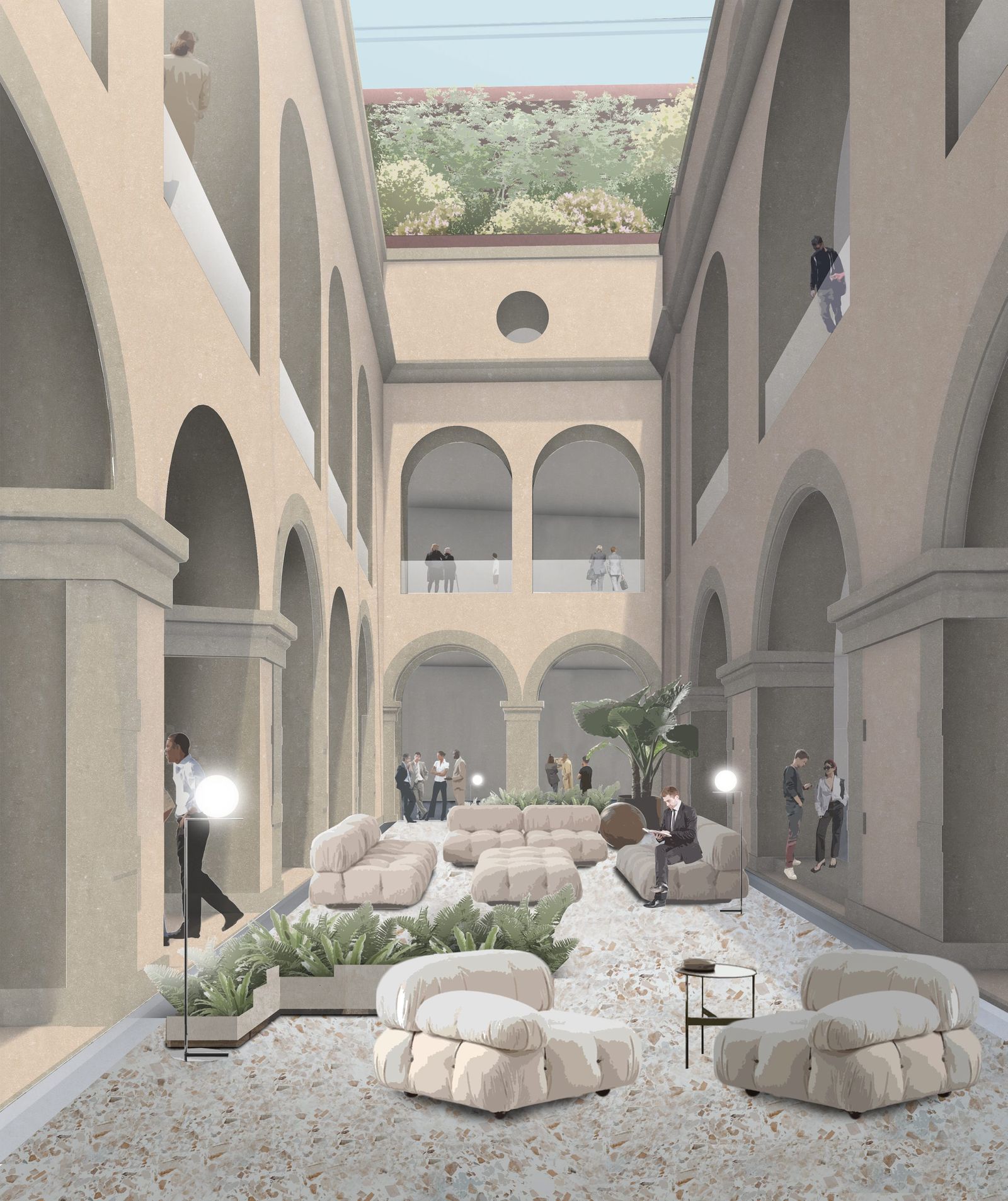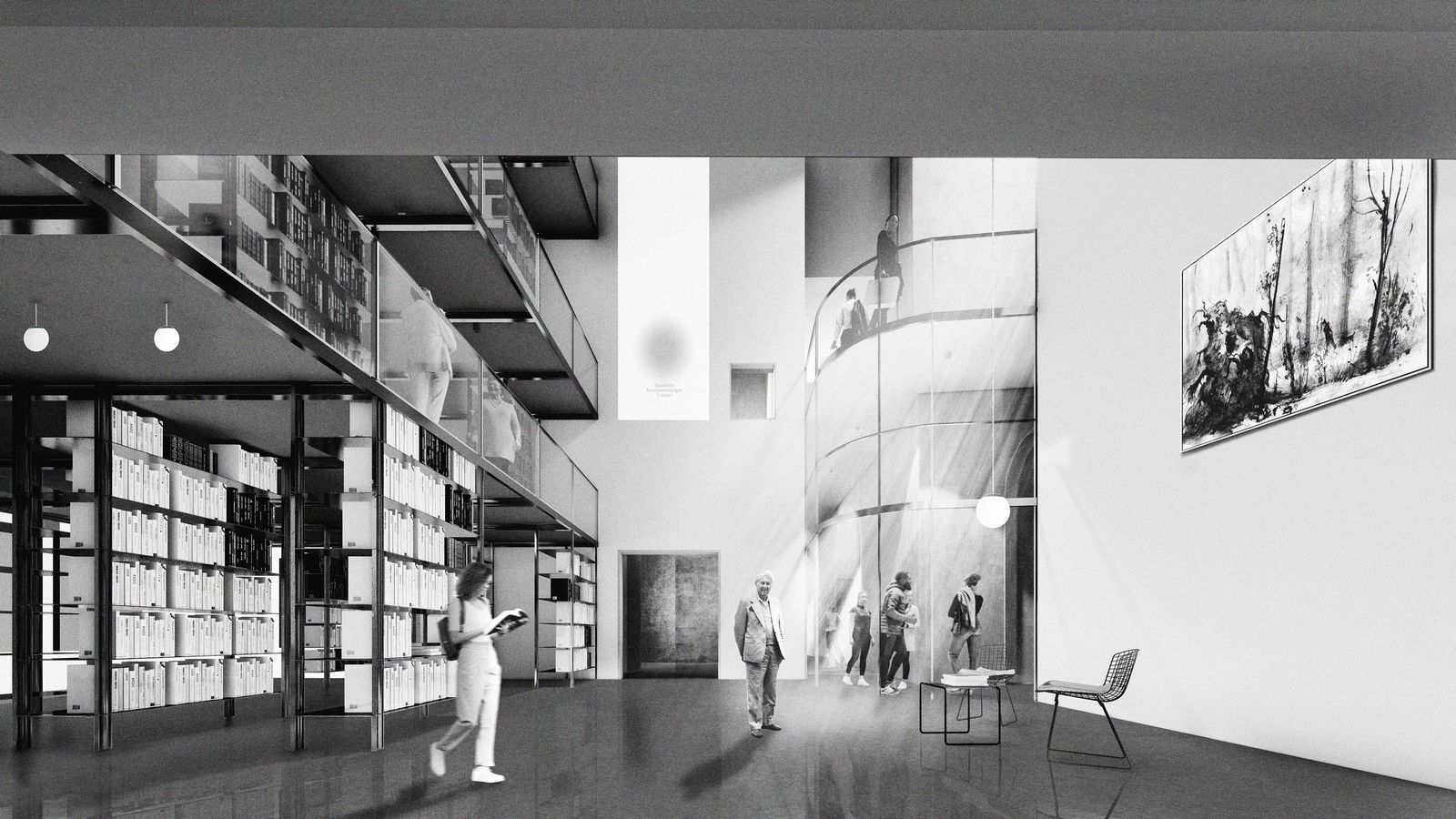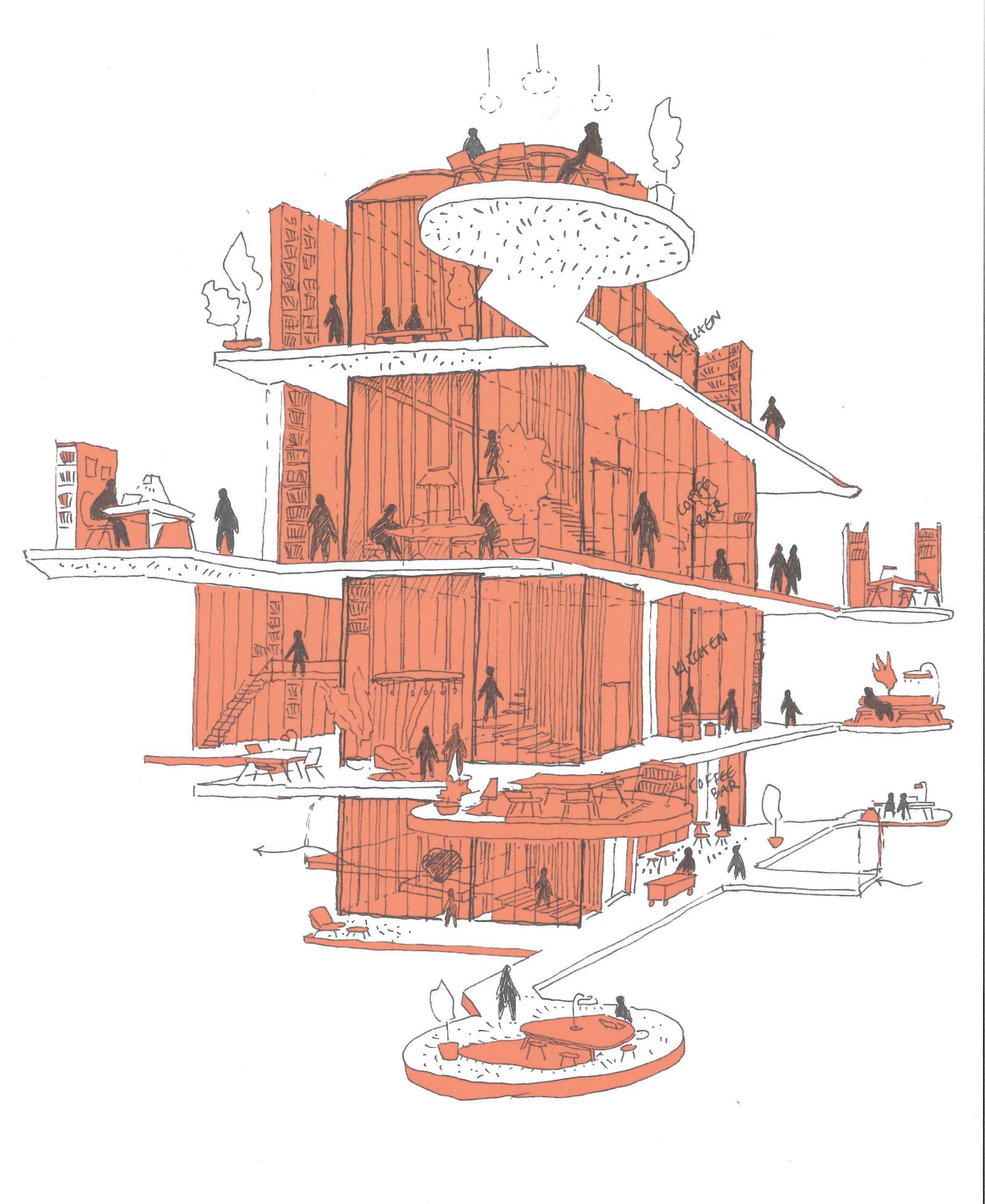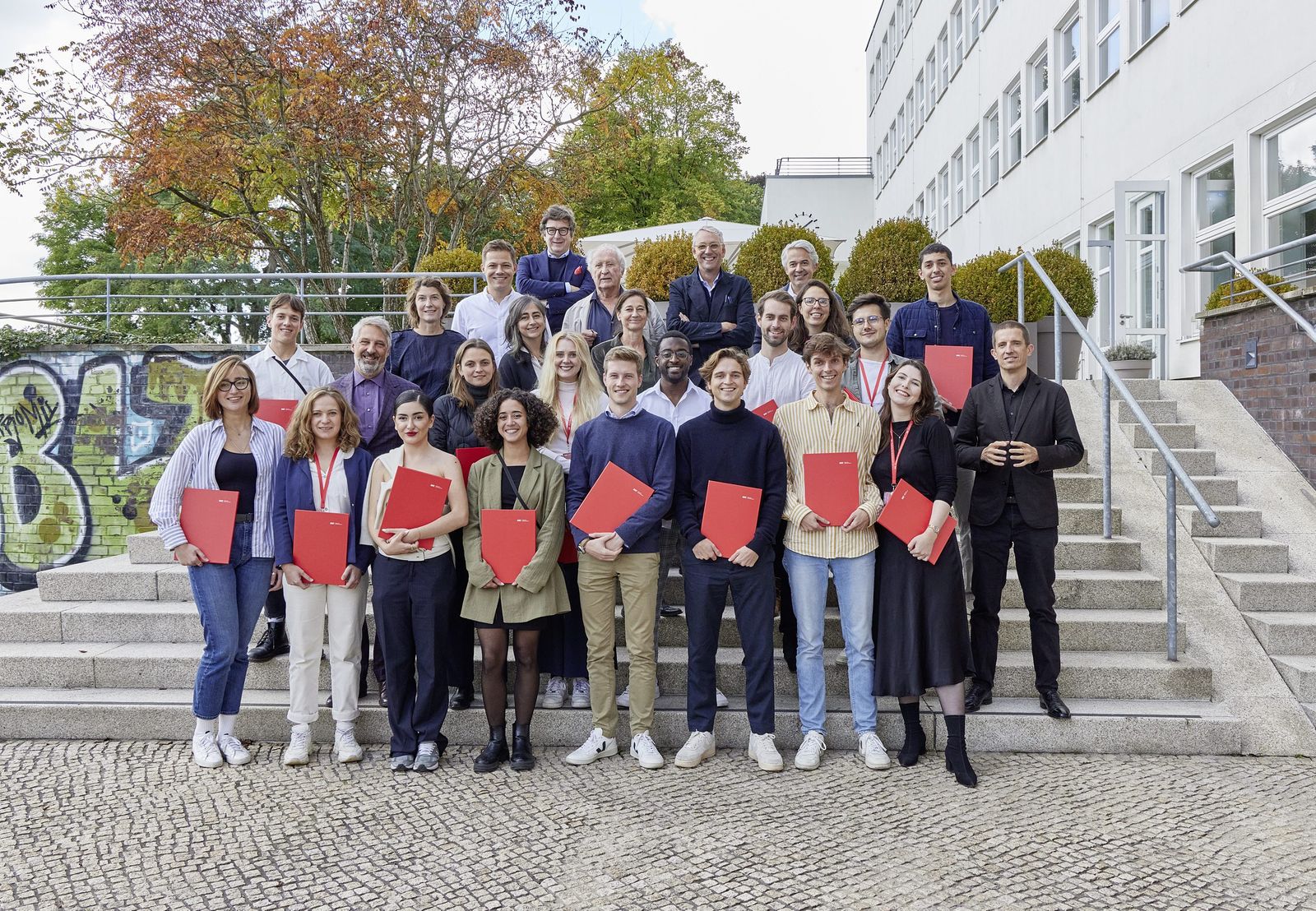Exhibition UMBAU. Nonstop Transformation // April 10 - May 5, 2025 - Jiushi Art Salon Shanghai
Dresden Royal Palace
Exhibition of the results of the aac workshop in Dresden
The autumn workshop of the aac Academy for Architectural Culture focused on the Dresden Royal Palace as a modern place of work. The aac brief was aimed at developing new concepts for the existing rooms in the palace to be used by the museum employees. Under the guidance of Volkwin Marg and Stephan Schütz, the international scholarship students produced designs for such new worlds of work in the historic Royal Palace. The results will be shown by Staatliche Kunstsammlungen Dresden (Dresden State Art Collections) in the Royal Palace from November 24, 2022.

The Dresden State Art Collections is one of the world’s most important museums. At its heart lies the Royal Palace, the center of the museum precinct with its exhibition facilities, workshops, and offices, where the collection originally started. The Royal Palace is also the hub of the work environment of hundreds of employees of Dresden State Art Collections.

The collection, the museum employees, and the visitors are key to a lively museum. Whilst the focus is obviously on the care and presentation of the collection, as well as on the number of visitors and their experience, the appreciation of staff and therefore the provision of attractive work places is a prerequisite for motivating the workforce to perform at their best over the long term. In view of the trend in recent years in many industries to opt for mobile working as an alternative form of work, the creation of an attractive work environment is particularly important. The task was therefore to create rooms that support the members of staff in their work, reflect the importance of their work, and promote constructive cooperation within the work place. This meant that the aac autumn workshop had to focus on the challenges of working in existing buildings in combination with the development of design strategies for modern worlds of work.

The workshop began with a three-day excursion to Berlin and Dresden. In Berlin, Chris Middleton of the Kinzo practice guided participants through the offices designed by his practice for Nike and Zalando. In Dresden, participants were able to gain an impression of the Royal Palace, where Prof. Peter Kulka gave an introduction to his many years of work in and on the historic building. After a tour of the city, Christian Hellmund led the group through the work environment of the new Sachsen-Energie headquarters, which was completed by gmp this summer. In the evening, Stephan Schütz and Prof. Dr. Marion Ackermann, Director General of Dresden State Art Collections, explained the design brief. After their return to Hamburg, students started their assignment in the aac studios. The four teams were supported by experienced tutors. The comprehensive teaching program was further enhanced by lectures and critical assessment sessions with guest professors Daniel Schöning of Ply Atelier from Hamburg, Prof. Martin Fröhlich of AFF architects from Berlin, and again Chris Middleton of Kinzo.

All the designs of the four groups transform the staff areas in the south wing of the Royal Palace from a cramped service area to open space that is used communally. The “layers of meeting” concept of group 1 layers areas for different types of cooperation around a vertical library. The library surrounding the inner courtyard, with its appeal as a place to spend time in, determines the appearance of the new meeting areas. Group 2 creates “marketplaces of activity” by removing superfluous building fabric in some areas (subtraction). This creates open areas on four floors for the different forms of activity-based work. Some of these spaces have several stories and – in combination with the compact existing rooms – create an intuitive city-within-a-city structure. In its design referred to as “opening towards the light”, group 3 elevates the courtyard area by one floor and opens the loft towards the inner courtyard under a new glass roof that extends across the courtyard; planting is added to enhance the interior. The staff area located above the public areas on the first floor benefits from a great deal of daylight. The design by group 4 is based on the idea of a “motor of cooperation”: the existing building is revitalized from inside out by placing activity areas around the central utility yard.

The results were presented in the aac premises in Hamburg on September 30, 2022. Subsequently, the designs were exhibited in the aac studios at the Rainvilleterrasse Campus. From November 24, 2022, they can be seen at the Dresden Royal Palace in the current exhibition entitled “aac-Entwürfe für das Residenzschloss Dresden – New Work at Staatliche Kunstsammlungen Dresden” (aac designs for Dresden Royal Palace – new work at Dresden State Art Collections).
Private view November 23, 2022, 6 pm
Venue Kleiner Schlosshof at Dresden Royal Palace, Taschenberg 2, 01067 Dresden
Date November 24, 2022 to January 8, 2023
Opening hours Wednesday to Monday, 10 am to 6 pm